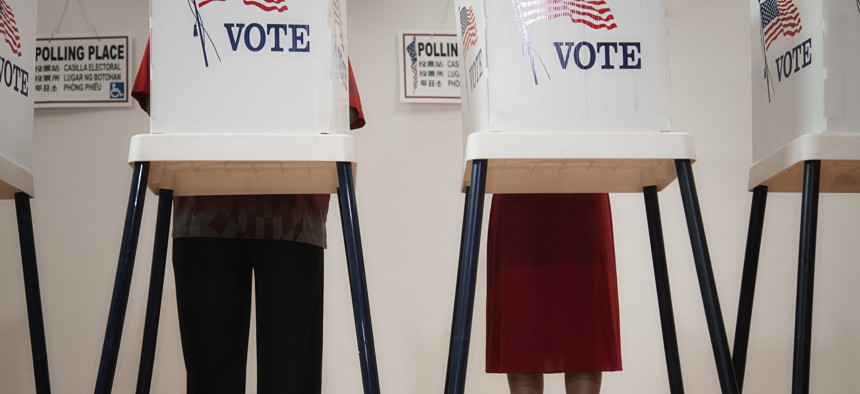Is it Time for Ranked-choice Voting in the US?

gettyimages/ Credit: Hill Street Studios
COMMENTARY | Advocates argue that ranked-choice voting solves the problems of other voting methods, while detractors counter that it makes elections unnecessarily complicated.
Ranked-choice voting is on the rise in the U.S., with nearly two dozen places now using the system for various offices. Advocates argue that ranked-choice voting solves the problems of other voting methods, while detractors counter that it makes elections unnecessarily complicated.
In the U.S., plurality voting is the most commonly used system to elect people to serve in government. Using this method, whichever candidate has the most votes after a single round wins. Proponents of plurality voting point out that it is simple to understand and easy to implement.
One problem arises, however, when there are several people running for office. In those cases, the vote could be split several ways, and the overall winner may not actually be very popular.
Some places that have experienced these sorts of results have chosen to adopt an electoral system aimed at ensuring that winners have majority support, such as runoff voting. Typically, if a candidate wins more than half the votes in the first round, that candidate is declared the winner. If not, the two candidates with the most first-round votes face off in a second round of voting.
This method, which can lead to several rounds of elections (particularly if it’s also used during the primaries), it can be expensive for the government to organize, and it requires voters to take additional time off work and other duties, which can reduce voter turnout.
In hopes of ensuring that winners have majority support while minimizing the downsides of runoff voting, some places have experimented with ranked-choice voting.
The way this system typically works is that voters rank candidates in order of preference. A candidate can win outright by receiving the majority of first-preference votes. If that doesn’t happen, the candidate with the fewest first-preference votes is eliminated, and voters who picked that candidate as their first choice will have their next choice counted. If there still is not a winner, then the candidate with the next fewest votes is also eliminated. This process continues with candidates eliminated one-by-one until one candidate has obtained a majority.
Proponents of ranked-choice voting argue that, unlike plurality voting, voters can vote for their favorite candidate without worrying that their vote might inadvertently help an unpopular candidate get elected with less than a majority. Although runoff voting helps to solve this problem by allowing for a potential second round, ranked-choice voting takes less time and money, because all votes are cast on one day on one ballot.
Because ranked-choice voting is a different system than most Americans are familiar with, one potential problem is confusion. Some critics incorrectly claim that ranked-choice voting lets voters cast more than one ballot per person, but in fact each voter gets just one vote.
In each round, each voter’s single vote is assigned—or, rather, transferred—to their top preference among candidates who can still win the election, as if a runoff round were to happen instantly. As a result, in some places, ranked-choice voting is called “single transferable vote” or “instant runoff voting.”
It is true that voters who are unfamiliar with the details may have problems when voting. Ballots filled out incorrectly, such as by marking the same preference twice, can be considered invalid. Also, failing to rank all of the candidates may result in the ballot being ignored in later rounds of counting, depriving the voter of influence. But teaching people how the new system works can likely reduce such problems.
By the end of 2022, Alaska will join the growing list of jurisdictions already using a variation of the system. By 2023, Boulder, Colorado and Burlington, Vermont, will also be using it, as will the California cities of Albany, Eureka and Palm Desert.
Is it time for other cities and states to jump on the bandwagon?
Joshua Holzer is an assistant professor of political science at Westminster College in Fulton, Missouri. A version of this article first appeared in The Conversation, a nonprofit news service.
NEXT STORY: Why Some States are Running Out Of Rental Aid and Others Have Millions Left Over





